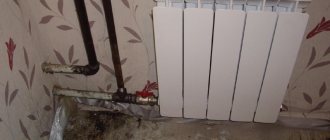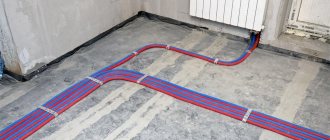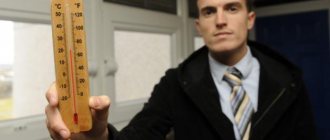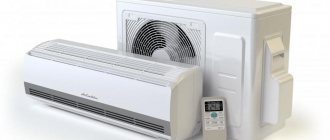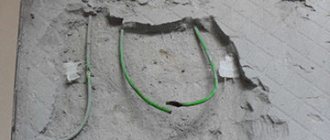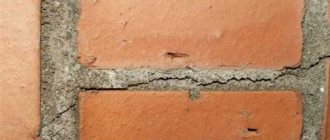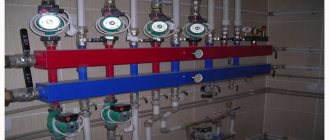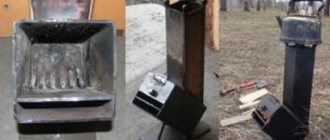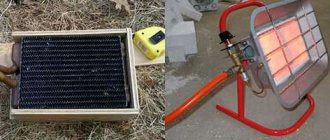Communications cannot last forever, so at one point there will be a need to repair or replace them. Not much depends on the material of the pipes either, since leaks can also occur on pipelines made from the highest quality and most reliable materials. Sometimes it may be necessary to repair heating pipes. We'll tell you why heating pipes crack and how to stop leaks.
Leaking heating pipes
Causes of leaking heating pipes
What happens if the heating pipe leaks? The main causes of emergency situations may be the following:
- Wear of heating pipes. Most often it is associated with the long service life of products. Most often, steel pipes are subject to physical wear.
- Violation of operating conditions. This can be caused by such phenomena as increased temperature, hydraulic shock, or increased operating pressure.
- Installation of heating pipes of poor quality.
- Violation of the tightness of the joint between the components of the line as a result of defects in the connecting components or their incorrect installation.
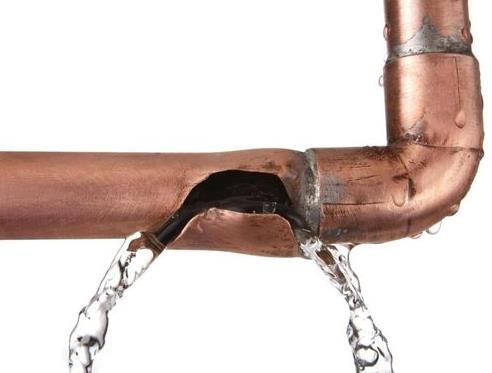
Water hammer in the heating system can lead to pipe rupture
All these reasons should lead one to think: is it worth carrying out hidden communications? To minimize risks, you will need to observe the following nuances:
- It is necessary to use as long materials as possible, especially if pipes need to be laid in the floor.
- Joints should not be sealed in such a way that they cannot be accessed later.
- If it is not possible to lay the pipe without joints, then you can make a frame-type structure. The trim will be attached to this structure.
How to detect a leak in a heating pipe
One of the “symptoms” of a malfunction of the system is extraneous noise. Vibration, whistling or clicking usually indicate that either the seal is broken or the pressure in the system has changed. In any case, you should pay attention to the noise that arises and, after examining the entire system, determine the place where the noise is most audible. Most likely, it was in this area that the problem arose. Having established the causes of noise in heating pipes, you need to immediately begin eliminating them.
Obvious signs of a leak are smudges at the joints or on the pipe itself. They appear as dark or rusty spots and drips.
However, these signs are clearly visible only on metal pipes. On plastic or metal-plastic that is not subject to corrosion, water droplets quickly evaporate, leaving virtually no traces. What to do if the heating pipe drips? How to eliminate a fistula in a heating pipe? Of course, the first thing you need to do is try to stop the leak. Repair work on different pipes is carried out using different technologies. But there are also some general points. Let us dwell in more detail on the methods of repairing heating pipes made of different materials. Indeed, in some cases, the problem can be solved independently, or, in any case, the leak can be stopped until a repair team is called.
First steps in the event of an emergency
How to wrap a heating pipe? If you have a couple of clamps with rubber seals in stock at home, you can prevent some emergency situations. In the event of an accident, the most important thing to do is to shut off the coolant supply to the area where the heating pipe is leaking.

Covering the heating riser of a multi-storey building
You will need to stop the heating boiler, turn off the pump and turn off the necessary taps and valves. The clamp will solve the problem temporarily, so repairs will still be inevitable. Before you begin the repair, you will need to prepare the necessary materials and tools, turn off the heating, turn off all taps and drain the water from the system. Depending on the material from which the pipes are made, repairs can be carried out in various ways.
Thermal insulation and sound insulation of heating pipes
Repair of circulation pumps
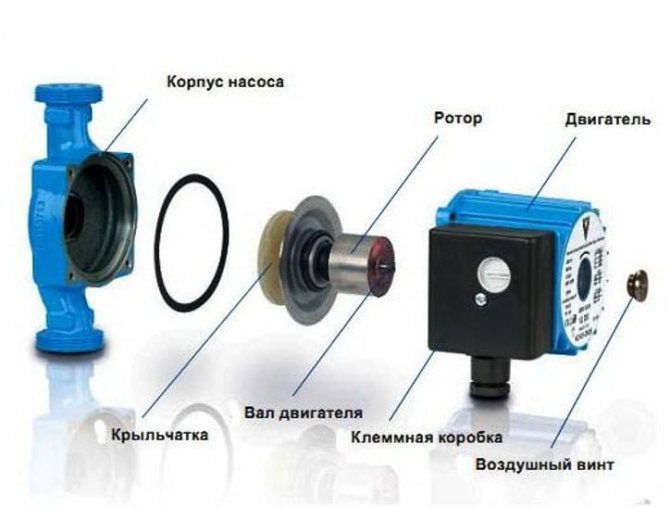
Circulation pump design
To increase the speed of movement of the coolant in the heat supply, a circulation pump is installed. Its breakdown will not only worsen heat transfer, but will also negatively affect the performance of the entire system.
Despite the apparent complexity of the design, you can repair the heating pump yourself. To do this, first determine the cause of the problem and develop the optimal scheme to eliminate it. Before repairing the heating circulation pump, you should turn off the system and wait until the coolant cools down. This can be avoided if a bypass is installed on the pump unit. It is enough to redirect the movement of hot water along the spare circuit.
Self-repair of heating pumps is carried out only after detailed familiarization with the design features of a particular model. Then the device should be dismantled to further restore functionality. There are several causes of malfunctions, after identifying which repair work on the heating pump is carried out with your own hands.
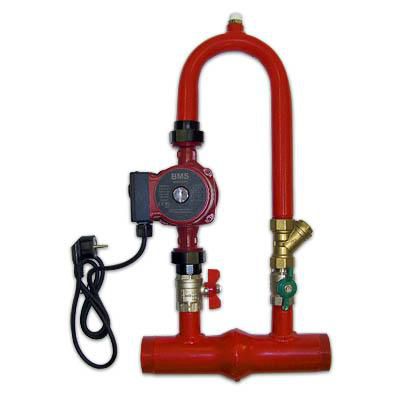
Heating pump unit
Let's look at the most common of them, as well as ways to solve the problem:
- The power plant does not work . First you need to check the condition of the terminals - the fuse on them often blows due to power surges in the network. The solution is to replace the fuse;
- Increased noise during operation . To repair heating pumps in this case, it is necessary to remove air from the pipe. It is best to install an automatic air vent in advance;
- Strong vibration during operation . Most likely the bearing on the shaft has failed. To repair the heating circulation pump, you will need to replace it;
- Incorrect blade rotation . The connection phase should be checked, as well as the correct installation of the pump;
- A little pressure . Most often this is due to a clogged filter. In this case, it will not be necessary to repair the heat supply pump, but to clean the filter.
After long-term operation, some pump components lose their hermetic properties - the geometry of the impeller and shaft changes. To repair a heating circulation pump, the condition of these elements is first checked. Almost all models are designed to replace components. But before purchasing, you need to select the right components, writing down the brand of the pump and its model.
There should be a sealing lubricant on the gaskets and pipes of the pump. If it is missing, it must be reapplied.
Steel pipe repair
How to fix a leaking heating pipe? If the problem is observed in threaded connections, then the connection will need to be disassembled, and then a new layer of winding will be applied.
When disconnecting, you must act very carefully, as you can accidentally break the seal. To make disassembly easier, you can preheat the connections. If a leak is observed at the joint or on the body of the pipe, then gas or electric welding will be required.
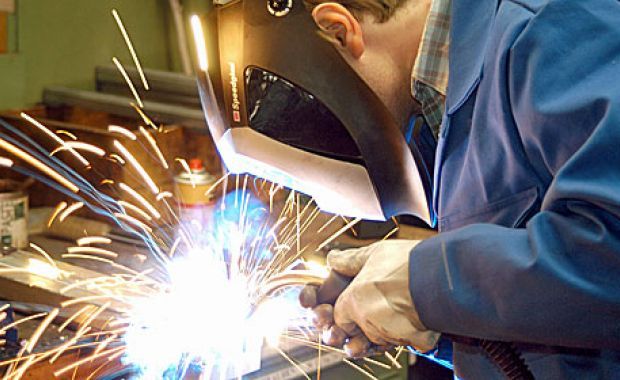
Repairing a metal heating pipe using welding
Copper pipe repair
What to do if the heating pipe drips? Repairing copper pipes will also require the use of welding, but there are some nuances that differ from the previous method. Welding copper is a rather complex process, and only a qualified specialist can carry it out. A problem such as a ruptured heating pipe can occur on those connections that were made by capillary-type soldering. If repeated soldering does not bring results, the entire section of pipe will need to be replaced.
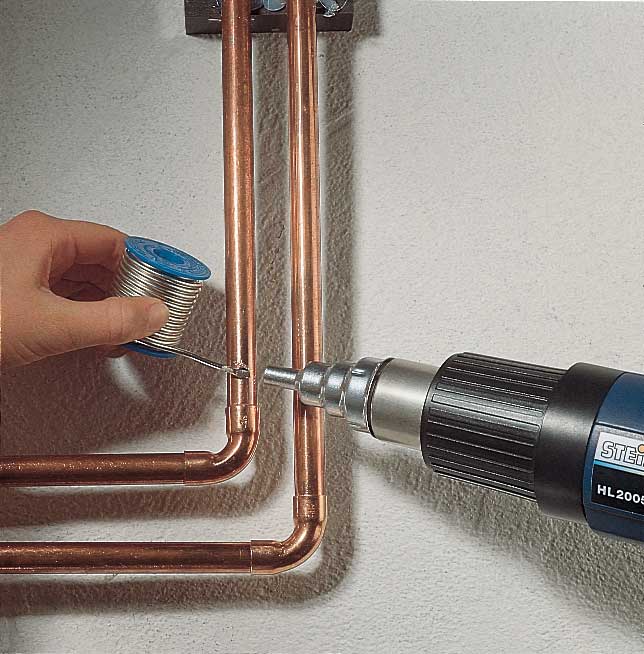
Copper pipe repair
Major renovation
Overhauls are best carried out at a time when the heating system is completely unused. In this case, you can take your time and do the work step by step. But it happens that a breakdown occurs at the most inopportune moment. Therefore, you must always be prepared to restore the system. Heating repair in a dacha is necessary in the following cases:
- breakdown of the heating circuit or any of its parts (pipes, radiators, etc.)
- underfloor heating repair;
- installation of new equipment;
- replacement of heating boiler.
A problem such as heating imbalance may also occur. If the system was designed incorrectly, and the equipment turned out to be incompatible, then it is necessary to call specialists to eliminate such problems.
Repair of metal-plastic pipes
If your system is equipped with metal-plastic pipes, then most likely the entire area in which the damage occurred will need to be replaced. The damaged area will need to be cut out, and a new one will need to be installed using press fittings or compression fittings. A fistula on a heating pipe for metal-plastic heating usually occurs precisely at compression-type connections.

Repair of metal-plastic pipes
Gas boiler installation
A gas boiler can be installed in the laundry room. However, in older boiler houses the boiler room is usually located in the basement and the LPG boiler cannot be installed there. A way out of this situation may be to install a boiler with a closed combustion chamber on one of the above-ground floors.
Such a boiler, instead of a separate boiler room (the so-called rooms not intended for permanent residence of people), can be installed, for example, in the hallway or kitchen.
In a room with an LPG gas boiler there should be no floor drains, but they are mandatory equipment in a solid fuel boiler room. There is no pipeline compensation.
Central heating system pipes lengthen and shorten as temperatures rise. This is most noticeable in the case of plastic pipes and least noticeable in the case of steel pipes. This is most noticeable in the case of plastic pipes and least noticeable in the case of steel pipes.
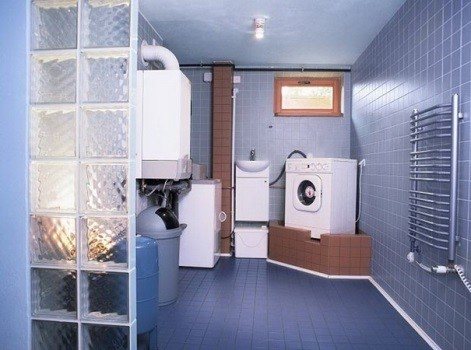
In the past, central heating pipes were made of steel and in small installations, such as single-family houses, due to the low linear expansion of steel, there was no need for special compensation.
However, you cannot simply install other pipes, especially plastic ones, in place of the old steel pipes. Lack of compensation can lead to deformation or even destruction of the pipeline.
To avoid this, special expansion fittings are usually required, as well as properly placed fixed and sliding brackets to secure the pipes.
Repair of polypropylene pipes
Leaks can occur even with such heating systems. Sometimes it can be quite difficult to determine the location of the leak, especially if it is minor:
Heating installation and pipe paint
- If the heating pipe (its threaded connection) leaks, the seals will need to be replaced.
- If a problematic situation is observed at a welded connection or a straight section, then pipe repair will consist solely of replacing the entire damaged section.
- Soldering of polypropylene pipes must be performed strictly according to certain technologies. The required temperature and heating time must be observed. Any mistake can cause the joint to fail within a short period of time.
- When replacing a section of pipe, it is not allowed to change the wiring diagram.
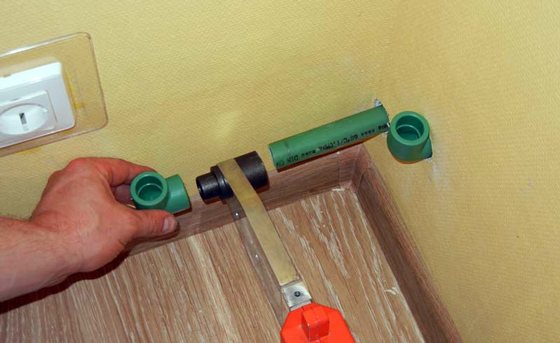
Repair of polypropylene pipes
After all repair work has been completed, it is still too early to turn on the boiler. First you need to fill the system with water. You also need to make sure that the pumping equipment is also turned off. In addition, you will need to remove air from the pipes. We turn on the boiler equipment and look after the area that has been restored. During the first day, you can check every hour or two how the joint behaves.
DIY heating pipe repair
You can temporarily stop the leak by applying a clamp
So, having discovered a leak in the heating system or plumbing, first of all, you need to try to stop it. This can be done by tightening the damaged section of the pipe with a clamp or covering the fistula with a special quick-curing paste directly in the place where the heating pipe is leaking. Both of these measures are temporary, that is, their use will give time to prepare for full-fledged repair work to restore the system. The complexity of the preparation depends again on what material the pipes are made of and on the location of the leak. So, if a leak occurs in a hard-to-reach place, it may be necessary to dismantle part of the floor or decorative wall covering. In addition, you will have time to prepare all the necessary materials in order to repair heating pipes as quickly as possible and not shut down the system for a long time. In the absence of a backup heating system, the time of emergency restoration work matters.
Having provided access to the repair site, turn off the heating system (or the area where the work will be carried out) and drain the coolant.
Repair of plastic heating pipes
Repair of polypropylene pipes is carried out using special “irons”, into which pipe joints are clamped, thus welding them. Therefore, if a leak appears in the body of the pipe or at the place of such a weld, then a welding iron will be required for repair. It is advisable to cut out the damaged area, and in its place put a whole piece of pipe of suitable diameter. However, if the emergency area is located in a hard-to-reach place (for example, when repairing heating risers, plumbing will have to be dismantled to access some areas), then it is better to replace a longer section of pipe. So that the soldering points are more accessible. If a leak occurs at the threaded connection, then replacing the winding is often sufficient. Typically, FUM tape (fluoroplastic sealing material) is used for these purposes. Sometimes, especially if the pipes are large in diameter, flax or asbestos strands impregnated with various sealing compounds are used.
Repair of metal-plastic pipes
On metal-plastic pipes, problems most often arise at the compression joints. This is where the fistula appears. The problem is solved by replacing the problem area. The damaged piece is cut out and a new one is installed using press fittings.
Repair of metal pipelines
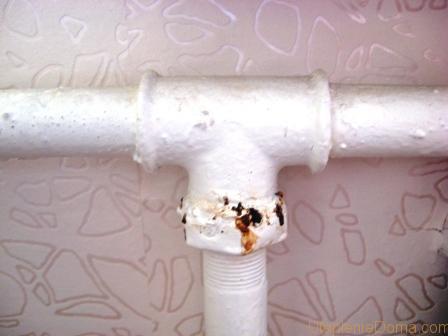
Leaks on metal pipes appear as rusty spots
Metal pipes are the most susceptible to corrosion and have the shortest service life compared to more modern materials. However, due to their low cost, such pipes are still widely used. The occurrence of a leak on a metal pipe is manifested by rusty streaks, and it is quite easy to detect. You can weld a fistula in a metal pipe using gas or electrode welding. If the damaged area is large or there are several leaks nearby, then it is better to replace the entire area between the two threaded connections. If the heating pipe is leaking at the junction, then the sealing winding is replaced at the junction of the pipe sections.
Steel pipe repair
Steel pipes are usually used in utility or technical rooms. They often have a large diameter, and this feature makes it possible to carry out repairs in unique ways. What to do if a fistula appears in a steel pipe? The following options apply:
- repair using a bolt: the fistula site is drilled out, a thread is cut and the bolt is screwed in;
- eliminating leaks using a temporary bandage or clamps with a sealing gasket (applied if the damaged area has a significant area);
- repair using an adhesive bandage - wrap the damaged area with fiberglass cloth impregnated with sealant (apply at least 6 layers);
- flange connection.
First, the system is turned off and the coolant is drained. Repair work is carried out on a dry and cooled area.
Copper pipe repair

Copper pipes are repaired by soldering
Copper is not subject to corrosion and therefore copper pipelines have the longest service life. If the heating was installed with high quality, in compliance with all technological standards, then such a system can be operated for many years without any problems. However, an emergency always occurs without warning. And we must be prepared to eliminate it as soon as possible. The leak can be temporarily stopped by applying a clamp with a neoprene gasket, or by using “cold welding”. You can completely seal a hole in a copper pipe using soldering. It should be remembered that if soldering is performed poorly, a secondary leak may occur. If you do not have experience, then it is better to entrust soldering of copper pipes to specialists.
As can be seen from our review, there are quite a few options for repairing heating pipelines. In any case, when installing the system, it is necessary to take into account the possibility of access to parts of the system if such a need arises. Therefore, when choosing a hidden installation method, install decorative elements on a frame that can be dismantled, if the need arises, without damaging the decor. If the system runs under the floor, then try to make a minimum number of joints that will be difficult to access.
The choice of method for carrying out repair work is determined, first of all, by the material of the pipes. You can clearly see the solution to the question of what to do if a heating pipe is leaking in the video.
Extraneous noise
Sometimes noise may occur in the heating pipes - it can be either a knocking in the heating pipes, or various clicks, and a hum. Why are heating pipes noisy? There are several reasons:
- During operation, the diameter decreases.
- Pipes are leaking.
- A smaller pipe diameter was installed.
It should be remembered that if the heating pipes are humming, immediately check whether there is a leak.
You may need to think about how to fix a leaking heating pipe. When you eliminate the leak, you will also eliminate the problem of noisy heating pipes.
Why are the heating pipes still humming? This may be a reduction in pipe diameter. You can hear the heating pipes knocking right on the spot. You need to walk along the pipes and find the reason why the heating pipes are clicking. Usually the source from which the heating pipes click is located in the basement - because there is more pressure here. It is very important to find in time the reason why the heating pipes are firing, humming or making noise - because this could be a prerequisite for a serious problem.
Heating repair in Moscow
Heating repair in Moscow. It would seem that in such a competitive market. Finding a master plumber should not be difficult. But oddly enough, you will have to look for a good specialist who knows his business in the installation of heating, water supply and sewerage. And if you also need a professional who knows how to weld pipes using electric welding. In order, for example, to replace or move heating and water supply risers in an apartment. Or an experienced gas welder who can carefully and evenly install a heating radiator. This is largely due to the fact that the welding profession itself, although necessary. But it is very labor-intensive, and therefore young people do not want to go into this industry. At the same time, there are almost no old shots left. Which could make a surgical seam or do welding work through a mirror. Although many people consider themselves professional welders, this is far from the case.
Often heating repairs in Moscow involve replacing communications in the basements and upper technical floors of buildings. Communications located in damp areas are most susceptible to aging, or more precisely to rust. In particular, pipes quickly fail, and if high voltage cables are laid next to them. In this case, stray currents are formed, or as they are also called Foucault currents. They turn metal heating and water supply pipes into a sieve with microscopic holes. By the way, there are quite a lot of such situations in old houses and office buildings. Because, probably, repairs and reconstructions of pipelines have been carried out many times. The location of previously laid steel pipes changed. New cables were laid, old ones were replaced and then transferred. This all contributes to the unwanted intersection of water and heating lines with wires. And unnecessary proximity to each other. This is how improper heating repairs in Moscow led to rapid aging and wear of the above materials.
Therefore, seemingly invulnerable steel pipes at first glance. Even if they are kept in a well-ventilated and dry place, painted with anti-corrosion agents and insulated. So, even all this often does not save them from leaks and subsequent unscheduled repairs. Therefore, in order to avoid this kind of trouble, you should not lay all engineering communications in one place or cross them. Compliance with such simple rules and recommendations will extend the life of heating and water supply systems for many years. And if you also remember that in order to carry out heating repairs in Moscow, you will have to look for a plumber and welder. Able to weld pipes located in hard-to-reach places. Therefore, it must be done correctly.
